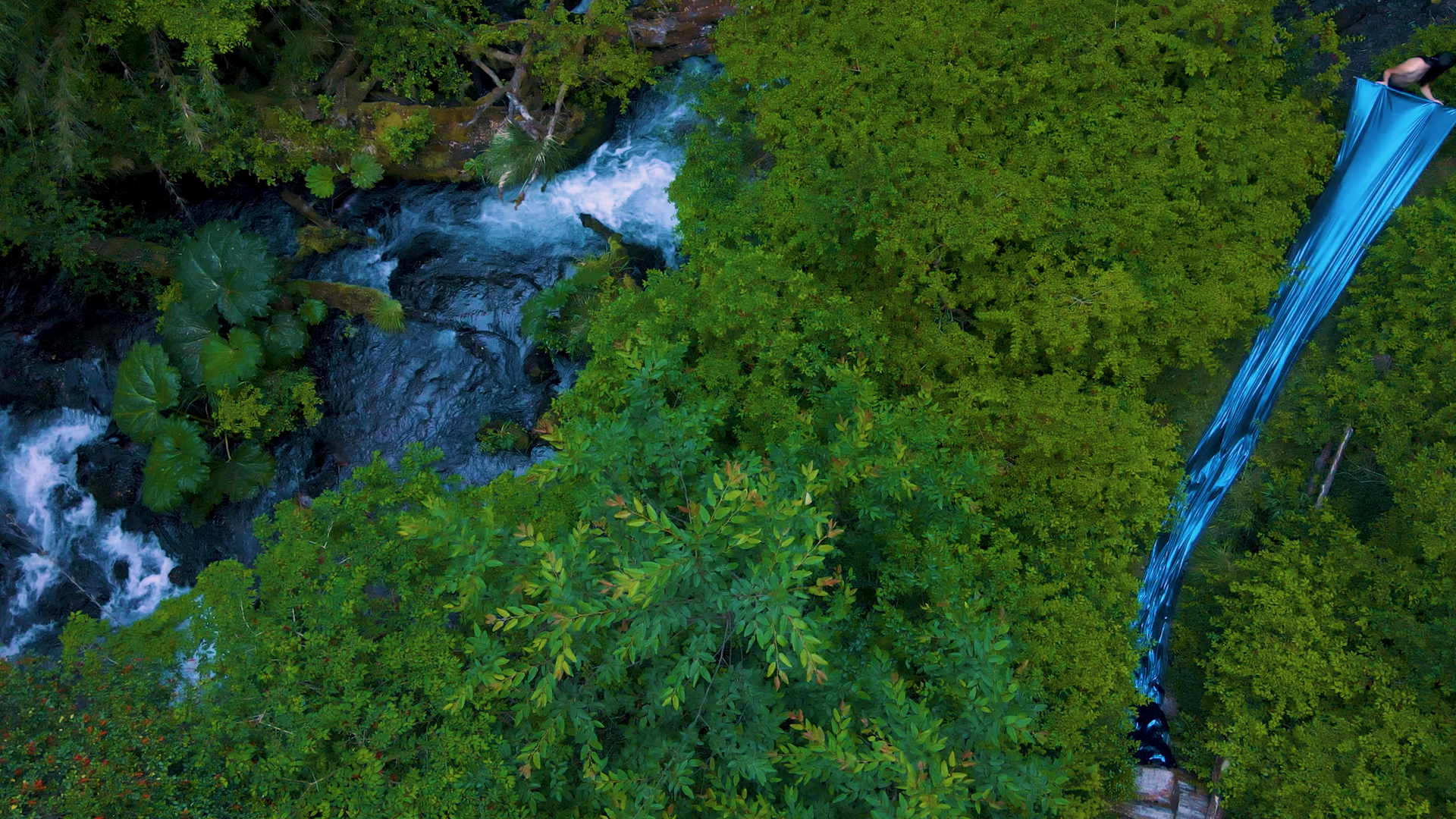A long braided pigtail finds its way through the small hole in the wall; the latter’s Baroque wallpaper pattern thereafter becoming a kind of screen for the long, brunette hair. The montage that follows on from the carefully composed image whisks the viewer away into a completely different world: just as carefully staged, the utopian-seeming building of the Chiesa Madre church in the Sicilian town of Gibellina Nuova now fills the entire screen. Such contrasts run like a red thread through Elisa Giardina Papa’s video piece “U Scantu: A Disorderly Tale” (2022), and here determine both the pictorial and narrative levels.

In this work, the Italian artist explores the Sicilian myth of the “donne di fora”, which we could perhaps best translate as “women from the outside and besides themselves”. Such women are attributed with all manner of healing powers and were, so stories say, able to dispel even the proverbial fear of life, or “Scantu”, from which the work takes its title. In the 17th century, these women were thus revered by parts of the population, feared by others, and marginalized and persecuted by the Inquisition, which condemned them for heresy. The stories suggest that each “donna di fora” combined within themselves dichotomies such as the female and the male, the human and the animal, the benevolent and the vindictive in a single person and in this way reconciled those categories.
Overcoming dichotomies
In the further course of “U Scantu”, Elisa Giardina Papa’s camera follows a group of women bikers who in the context of the video can be read as a reimagination of those “Donni di fora”. To the sound of thumping basslines, the young women breeze through the abandoned modern architectural setting of the Sicilian town of Gibellina Nuova, a city created at a drawing board in the late 1960s and erected in line with modern urban planning maxims after the complete destruction of the historical city of Gibellina Vecchia by an earthquake. Lyrically and associatively, a voice off-screen recounts fragments of stories about the “donne di fora”, tells us their names and deeds, and recounts their persecution and punishment.


Elisa Giardina Papa structures her video in three sections, each of which bears its own subheading. The film ends in the historical Palazzo Biscari, where we see a goat meanders through the imposing building, and quite literally binds the middle section of the two parts of the film with ropes. Arms and legs and likewise plant leaves and a lemon are skillfully tied up. Very similar ropes were used by the women back then to bind people whom they sought to free of “Scantu”. After a few ritual words and acts, the bonds were then cut open and the curse, the fear, the melancholy thus banished. In Papa’s piece, the present is thus tied to the past, too, possibly in the hope that human dichotomies and categorizations can also be caught and thus banished.

Insights into the culture of the Mapuche
Elisa Giardina Papa has chosen as her other film(s) two works by Chilean artist Seba Calfuqueo. Calfuqueo’s family are descendants of the Mapuche, an indigenous ethnic group in South America whose home territory extended from Chile into neighboring Argentina. “You will never be a Weye” (2015) focuses on female shamans who were systematically persecuted in the course of Spanish colonization; they who played an important role in Mapuche and did not correspond to the binary structure of gender. The film reflects on the influence of colonial history on one’s personal and family identity as well as on the ongoing history of discrimination. The second film, “TRAY TRAY KO” (2022) revolves around trayenko (waterfalls), which play a special part in the Mapuche worldview and rituals and are considered holy places. In the course of the performance, Calfuqueo moves in a gleaming cobalt blue robe along the river in order to then enter the waterfall which literally seems to absorb them completely.

SEBA CALFUQUEO, TRAY TRAY KO, 2022, Image via sebacalfuqueo.com
